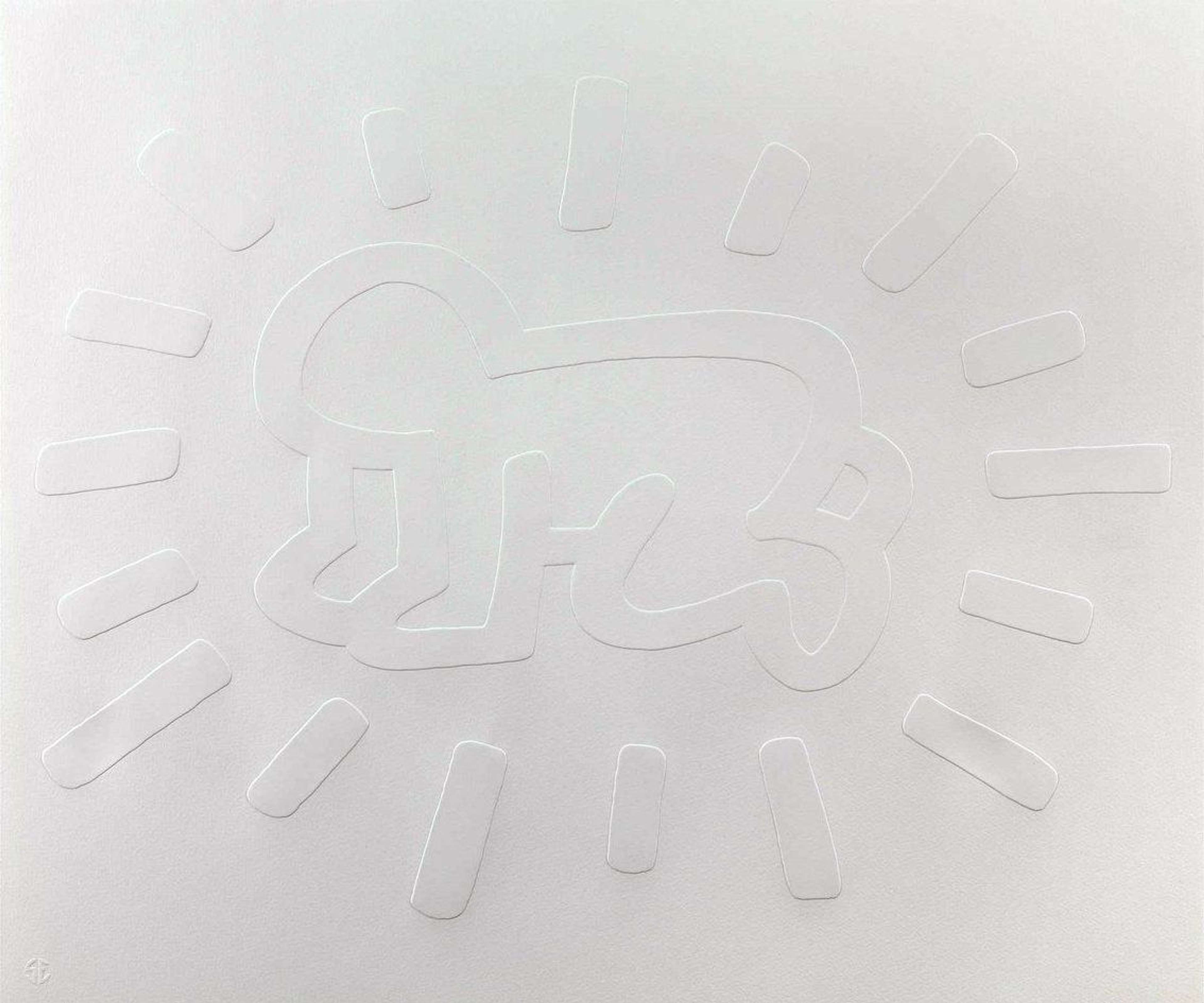
Radiant Baby (white)

Radiant Baby (white)
Unsigned Print
Keith Haring
£8,500-£13,000
$17,000-$26,000 Value Indicator
$16,000-$24,000 Value Indicator
¥80,000-¥120,000 Value Indicator
€9,500-€15,000 Value Indicator
$90,000-$130,000 Value Indicator
¥1,760,000-¥2,700,000 Value Indicator
$11,500-$17,000 Value Indicator
There aren't enough data points on this work for a comprehensive result. Please speak to a specialist by making an enquiry.
53 x 64cm, Edition of 60, Screenprint
Auction Results

Track auction value trend
Meaning & Analysis
This signed screen print from 1990 is a limited edition of 60 from Keith Haring’s White Icons series and is one of the artist’s most recognisable motifs. Radiant Baby shows an image of a cartoon child, crawling on its hands and knees rendered in bold lines with radiating lines pulsating from its body. The symbol first emerged in Haring’s work during his days as a subway artist in New York, where he used the Radiant Baby in place of his signature, known as his ‘tag’, on public art projects.
Corresponding exactly with Haring’s brightly coloured Radiant Baby Icon from his Icons series, this print is formed from bold embossed contours with thick, rounded lines radiating from the figure to provide a sense of excitement and movement. Haring strips back the original image into a more subtle, simplified motif by rendering the icon colourless, now presenting the radiant baby all in white.
Radiant Baby is a noteworthy example of how Haring created optimistic icons for his generation, to be displayed in public spaces during a time of technological acceleration, rampant capitalism and political turmoil. Haring described the radiant baby motif as “the purest and most positive experience of human existence” and used the figure as a symbol of hope for the future.